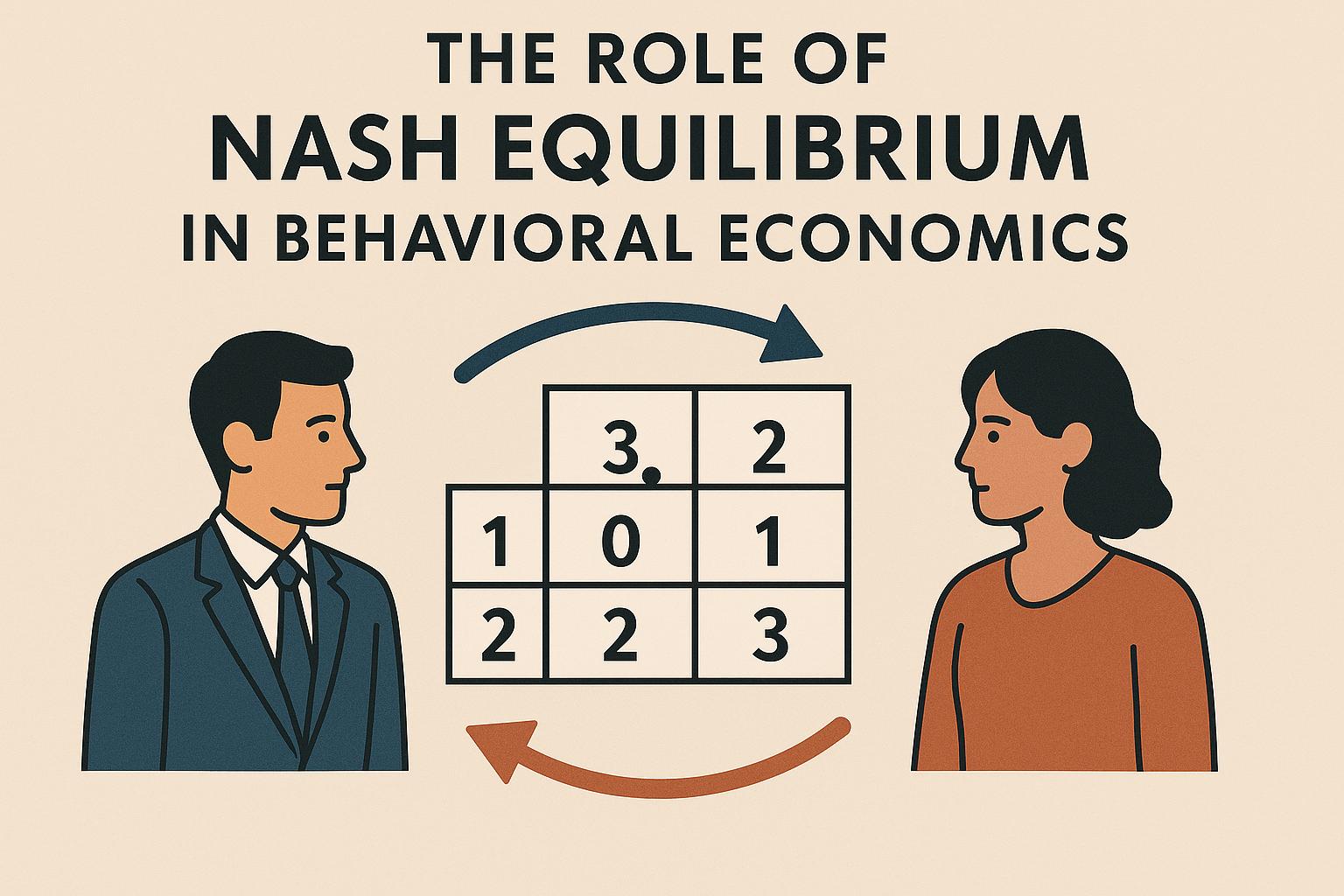The Nash Equilibrium: An Overview
The Nash Equilibrium, a foundational concept in game theory, was introduced by the mathematician John Nash. It represents a situation in a game where each player’s strategy is optimal, given the strategies of all other players. In simpler terms, once the Nash Equilibrium is reached, no player can benefit by unilaterally changing their strategy, provided other players’ strategies remain unchanged. This principle is crucial for understanding strategic interactions in various settings, ranging from simple games such as tic-tac-toe to complex economic models.
Nash Equilibrium in Behavioral Economics
Behavioral economics, which merges insights from psychology with economic theory, uses the Nash Equilibrium to understand decision-making. This field examines how individuals often deviate from purely rational behavior due to various psychological factors. These deviations include biases, heuristics, and emotions that can lead individuals or groups to make decisions that do not necessarily align with traditional economic predictions. By applying the concept of Nash Equilibrium, behavioral economists can better understand how these deviations affect economic outcomes, thereby allowing for the development of more accurate and human-centric economic models.
Predicting Outcomes
The Nash Equilibrium helps in predicting the outcomes of strategic interactions among individuals or organizations. It serves as a valuable tool in anticipating how people and entities are likely to behave in competitive situations where multiple actors are involved. In behavioral economics, this can shed light on why certain market behaviors occur even when they might seem irrational. For instance, understanding why people tend to follow trends or why companies might engage in price fixing despite risks of legal repercussions can be analyzed through the lens of Nash Equilibrium. By predicting when such an equilibrium might occur, economists can also speculate on the stability and sustainability of certain behaviors within markets.
Analyzing Strategic Choices
In many cases, behavioral economics studies how individuals’ limited rationality, biases, and heuristics affect their strategic choices. These factors can influence everything from personal decisions to corporate strategies. The Nash Equilibrium provides a baseline for these analyses. By comparing actual behavior to the predicted Nash outcomes, researchers can identify and quantify the impact of irrational behaviors or cognitive biases. This comparison allows an exploration of whether factors such as altruism, fairness, or social pressure cause deviations from the equilibrium, leading to behavioral insights that can inform both policy and practice.
Examples in Behavioral Economics
Several applications of Nash Equilibrium in behavioral economics provide valuable insights into human behavior. These examples illustrate how the equilibrium can be not just a theoretical construct, but a practical tool for understanding and addressing real-world issues.
Public Goods and Free Riding
When individuals are faced with the choice to contribute to a public good, the temptation to “free ride” often leads to under-provision of the good. The Nash Equilibrium can illustrate why, even when contributing benefits society overall, individuals choose not to contribute if others do not. This situation is often termed the “tragedy of the commons,” where individuals acting in their self-interest lead to collective harm. Behavioral economics studies how this equilibrium can be shifted by changing incentives or introducing psychological nudges. For example, emphasizing communal benefits or employing moral suasion can encourage more cooperative behavior, moving the system toward a more favorable outcome than predicted by traditional Nash analysis.
Markets and Competition
In markets, companies often have to decide on pricing and production strategies based on competitors’ actions. While traditional economics assumes that firms operate in a highly rational manner, behavioral economics acknowledges that decision-making can be swayed by biases or incomplete information. Factors such as perceived fairness, risk aversion, or even overconfidence can influence a firm’s strategy. Understanding how real-world markets settle into a Nash Equilibrium helps in analyzing market dynamics and devising effective regulatory policies. Regulators can account for these behavioral factors when crafting policies to ensure markets function smoothly, aiming to guide firms towards more efficient and competitive equilibria.
Beyond the Traditional Model: Implications for Policy and Strategy
The integration of Nash Equilibrium with behavioral insights has significant implications for informing public policy and corporate strategy. It suggests that interventions designed to promote social welfare or competitive fairness must consider not only economic incentives but also psychological and social factors. Policymakers can, for instance, design taxes, subsidies, or campaigns that align more closely with how people actually think and behave, rather than how they are expected to act in classical economic models.
Expanding the Analytical Framework
The study of Nash Equilibrium within behavioral contexts also encourages the expansion of analytical frameworks to include bounded rationality and dynamic interactions over time. Researchers are increasingly using more sophisticated models that account for learning and adaptation, as individuals and groups update their strategies based on past experiences and anticipated future changes.
Conclusion
The role of Nash Equilibrium in behavioral economics extends beyond traditional economic models by encompassing a deeper insight into human behavior. Although individuals do not always act in perfect rationality, Nash Equilibrium provides a crucial tool to understand the complex strategic interactions that occur in economic environments. By applying this concept, behavioral economists continue to explore the nuances of decision-making and strategy in real-world scenarios. This exploration not only enriches the field of economics but also offers practical applications for addressing some of the most pressing challenges in society today.
For further reading on the Nash Equilibrium and its applications, refer to resources like academic journals or books by leading experts in game theory and behavioral economics. These texts can provide comprehensive analyses and case studies that further illustrate the broad impact and utility of this foundational concept.
This article was last updated on: November 6, 2025

